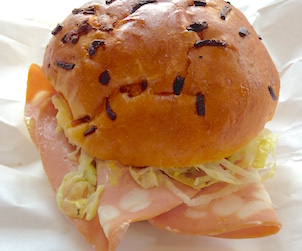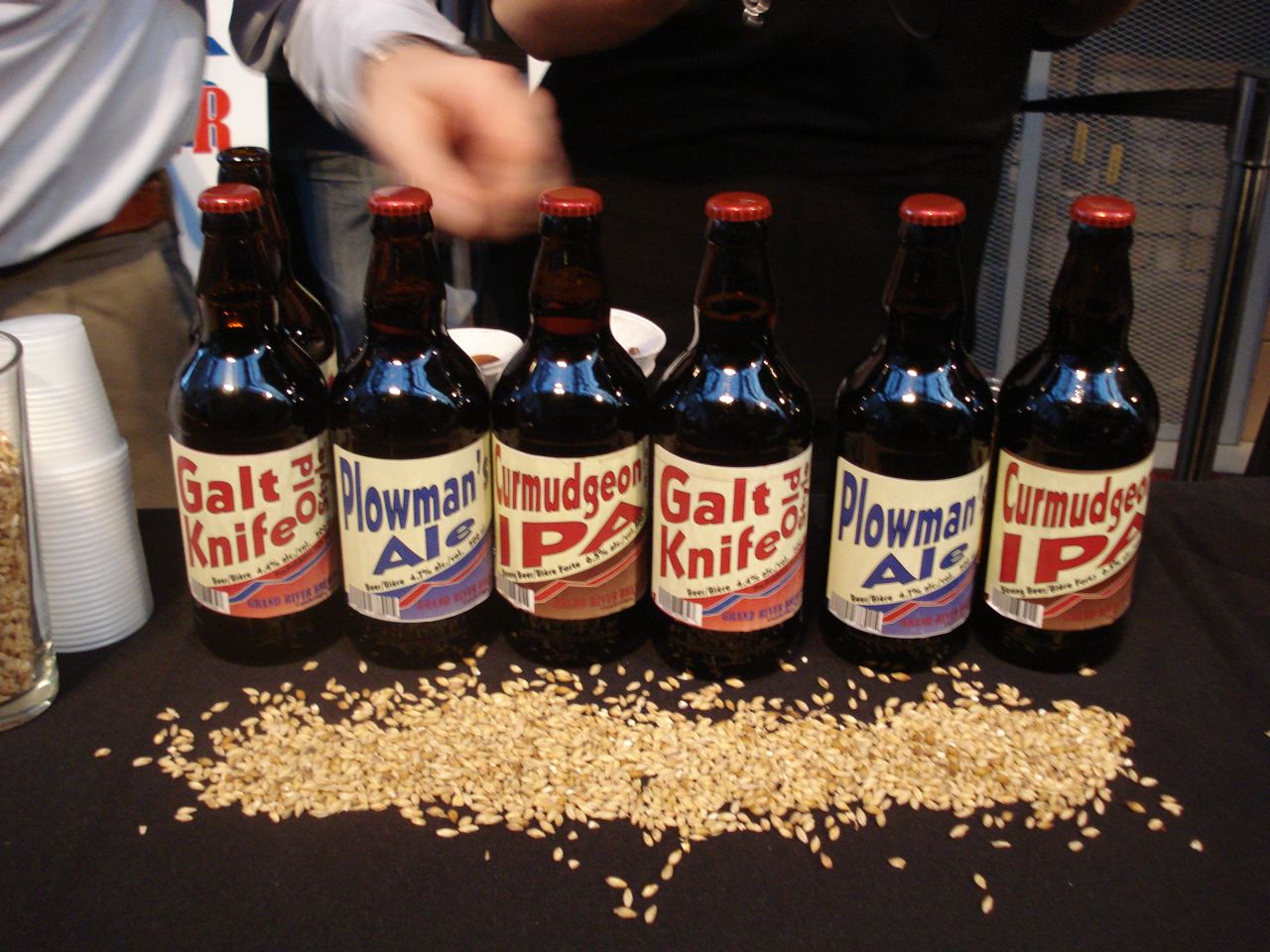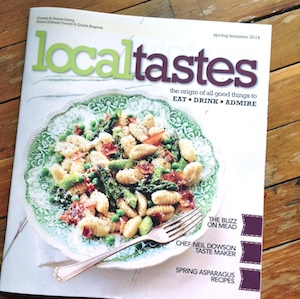Malcolm Jolley develops an obsession with an ancient Mediterranean meat treat.
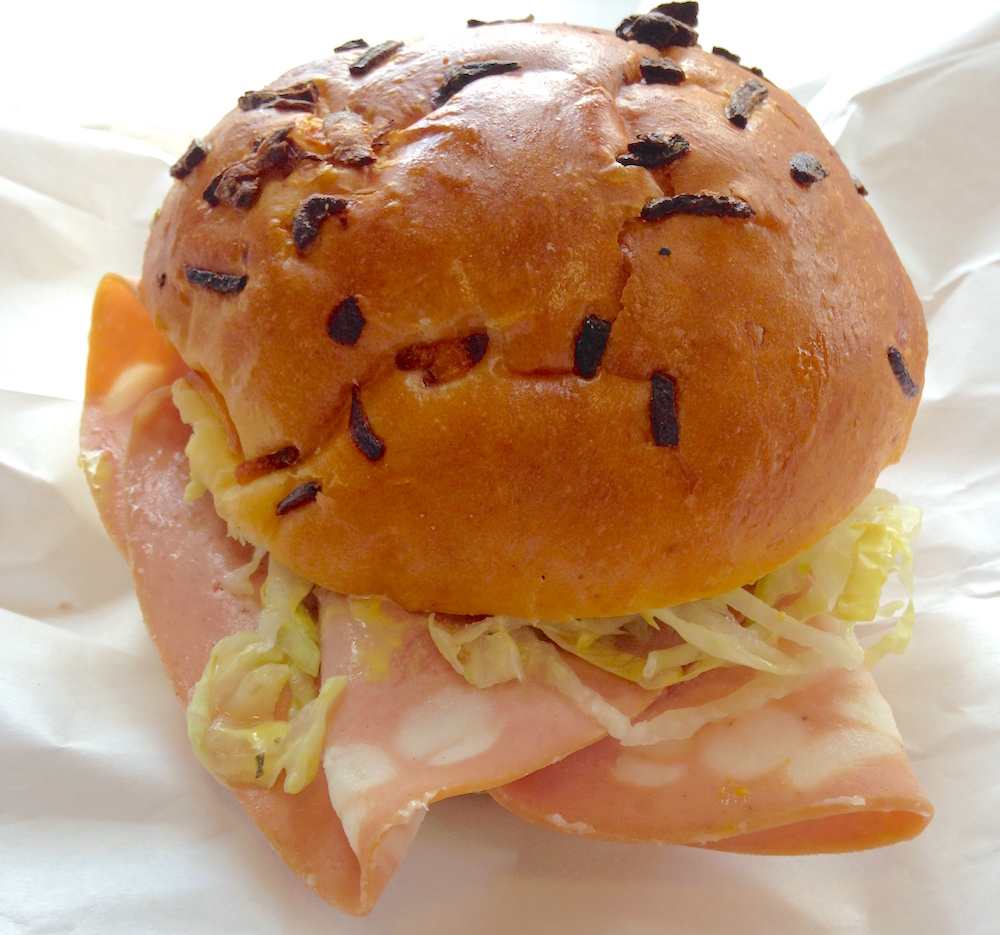 Last year, I also wrote (here) about the sandwiches that are served at my local butcher shop (and Good Food Fighter), Olliffe. In brief, they make a set amount of sandwiches every morning, which nearly always sell-out by one or two o’clock. What they make depends on what they’ve got, so I never know exactly what kind of sandwich I’m going to find behind the counter. I like the element of sport in that, but lately I’ve been hoping for one particular sandwich, whose appearance is rare and elusive, the Mortadella.
Last year, I also wrote (here) about the sandwiches that are served at my local butcher shop (and Good Food Fighter), Olliffe. In brief, they make a set amount of sandwiches every morning, which nearly always sell-out by one or two o’clock. What they make depends on what they’ve got, so I never know exactly what kind of sandwich I’m going to find behind the counter. I like the element of sport in that, but lately I’ve been hoping for one particular sandwich, whose appearance is rare and elusive, the Mortadella.
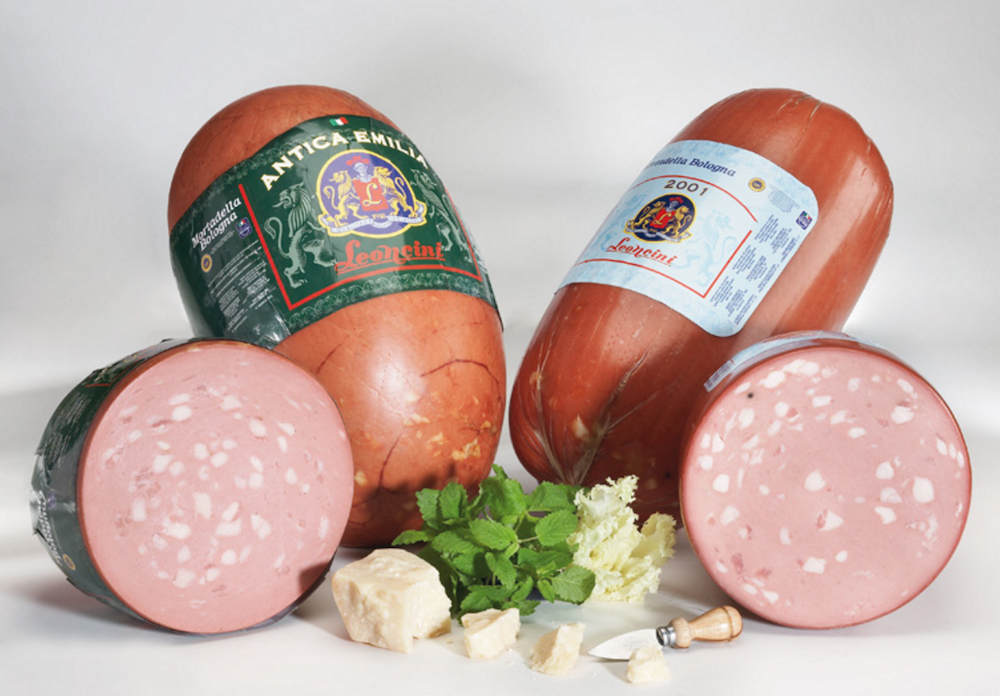 I am not the only one haunted by dreams of soft pink sausage paste. When Chef Massimo Bottura began to develop his own style of avant garde cuisine, he set out to apply the techniques he had learned from Ferran Adria at El Bulli to pay homage to the cuisine of his native Emilia-Romagna. The first dish to emerge from the the burst of creative culinary energy that has seen Bottura’s restaurant, Osteria Francescana, win this year’s San Pellegrino designation as ‘Best Restaurant in the World’, was (and is) called Memories of a Mortadella Sandwich. In an interview last year, Bottura explained to me the genesis of the dish: it’s rooted in his gratitude to his mother for supporting his career – she used to make him a Mortadella sandwich every day as a schoolboy. The Mortadella sandwich is a thing of consequence, which nourishes both boday and soul.
I am not the only one haunted by dreams of soft pink sausage paste. When Chef Massimo Bottura began to develop his own style of avant garde cuisine, he set out to apply the techniques he had learned from Ferran Adria at El Bulli to pay homage to the cuisine of his native Emilia-Romagna. The first dish to emerge from the the burst of creative culinary energy that has seen Bottura’s restaurant, Osteria Francescana, win this year’s San Pellegrino designation as ‘Best Restaurant in the World’, was (and is) called Memories of a Mortadella Sandwich. In an interview last year, Bottura explained to me the genesis of the dish: it’s rooted in his gratitude to his mother for supporting his career – she used to make him a Mortadella sandwich every day as a schoolboy. The Mortadella sandwich is a thing of consequence, which nourishes both boday and soul.
 The Mortadella at Olliffe is the real deal, made by Salumi Leocini in Italy. Mortadella from Bologna has, of course, its own IGP and is overseen by the Consorzio Mortadella Bologna. Mortadella is an old food. It’s cited in Roman texts, and some claim its name from the action of pulverising pork in a mortar (mortaio). The recipe is always finely ground pork and bits of pork fat, unlike North American version of ‘Balogna’ or ‘Baloney’ that often are made of beef or whatnot. Pistachios or peppercorns can be added, but I like the pure stuff, which is what comes in the sandwich.
The Mortadella at Olliffe is the real deal, made by Salumi Leocini in Italy. Mortadella from Bologna has, of course, its own IGP and is overseen by the Consorzio Mortadella Bologna. Mortadella is an old food. It’s cited in Roman texts, and some claim its name from the action of pulverising pork in a mortar (mortaio). The recipe is always finely ground pork and bits of pork fat, unlike North American version of ‘Balogna’ or ‘Baloney’ that often are made of beef or whatnot. Pistachios or peppercorns can be added, but I like the pure stuff, which is what comes in the sandwich.
Despite its vaguely Teutonic appearance, Mortadella is a particularly Mediterranean charcuterie, as its principal flavouring agent is traditionally the berry from the myrtle plant, which has a mildly juniper aroma and is native to that sea’s basin. The Latin phrase farcimen murtatum means myrtle sausage and, according to the O.E.D. and O.C.F., is the more likely origin of the name. I wonder what Mortadella would have been called if it was named after its traditional casing: a pig’s bladder.
Of course, on the days the butchers haven’t made Mortadella sandwiches, there’s nothing preventing me from buying a few slices and taking them home to make my own. Another, equally delicious way to eat Mortadella that is common in Italy is as an antipasto: cubed and speared with a toothpick. A fine pre-meal snack for a warm night with a glass of cold white wine.

